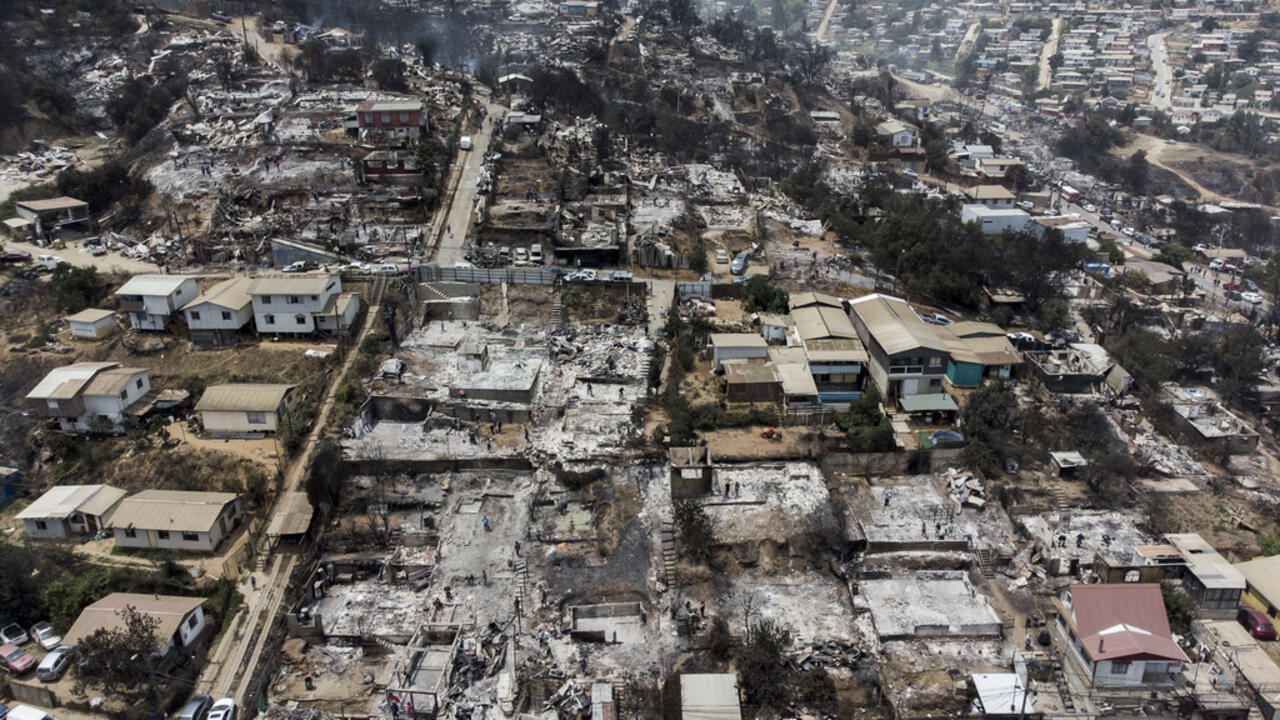Incidents in Chile: scenes of chaos and a heavy toll that could still evolve
At least 112 people have died and 3,000 to 6,000 homes have been burned, according to a still very provisional assessment. The region is still in a state of emergency and on February 5, a curfew is in effect in four of the most affected municipalities to allow for evacuations, the circulation of emergency services, and also to prevent looting. Hundreds of families have lost everything.
Their belongings, their homes, have been completely consumed by the flames. This is the case for Marcela, who shows the extent of the damage on Chilean television. Two blackened walls still stand, but on the ground, there is only a mass of sheet metal, with only her oven not completely burned.
“It’s as if there had been an atomic bomb. It’s indescribable, no one really realizes what happened,” says Marcela, who remembers the arrival of the fire. “There, in the street, there were gigantic flames.
Neighbors died burned as they tried to escape.” Nearly 26,000 hectares have been reduced to ashes. The meteorological conditions of the last few hours, however, seem more favorable, according to the Minister of the Interior, Carolina Toha.
The Las Tablas fire, the most important in the Valparaiso region, is still active on a perimeter of 80 km. And some 1,400 firefighters and 1,300 military personnel and volunteers are still mobilized against dozens of fires in the center and south of the country, according to the National Service for the Prevention and Response to Disasters (Senapred). The French government extends its support and solidarity to the Chilean government and people.
It offers condolences to the victims’ families. France stands ready to provide assistance. [@steph_sejourne] [@ambafrancecl] [February 4, 2024]
Pope Francis called on Sunday to pray “for the dead and the injured in the devastating fires in Chile.”
This heatwave resulting from the El Niño climatic phenomenon is currently affecting the southern cone of Latin America, in the middle of the summer season. After Chile and Colombia, the heatwave is now threatening Argentina, Paraguay, and Brazil.
